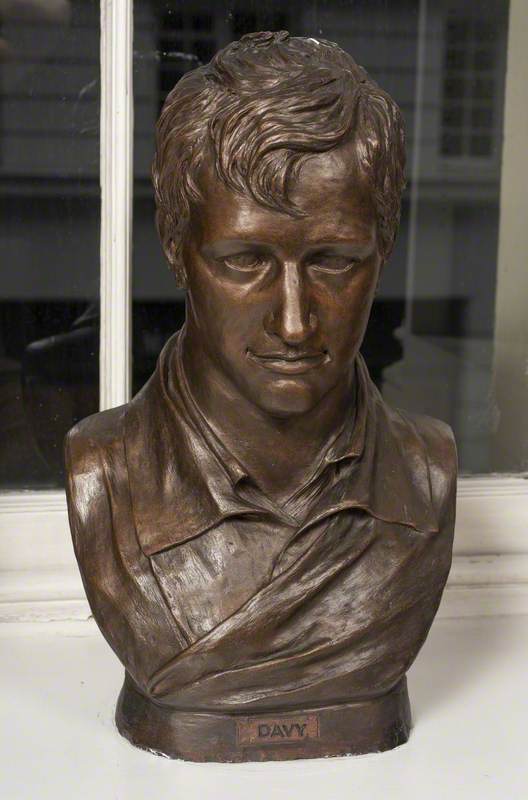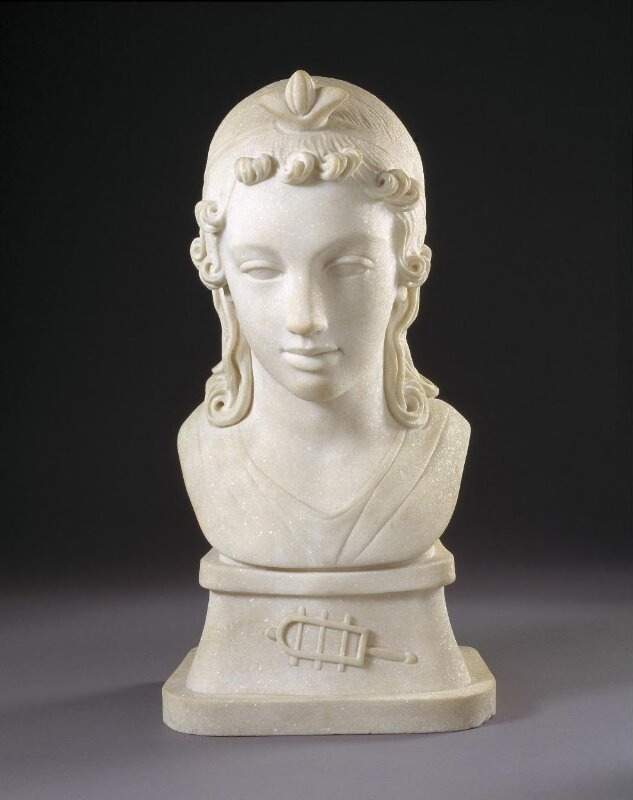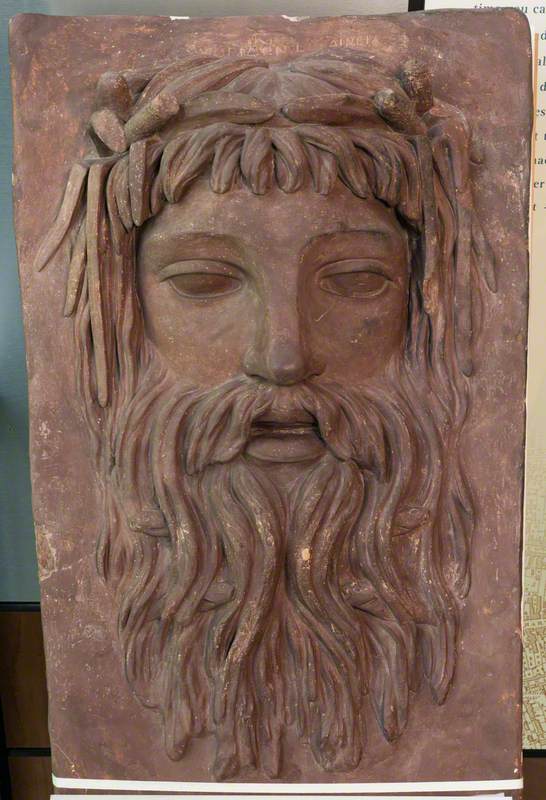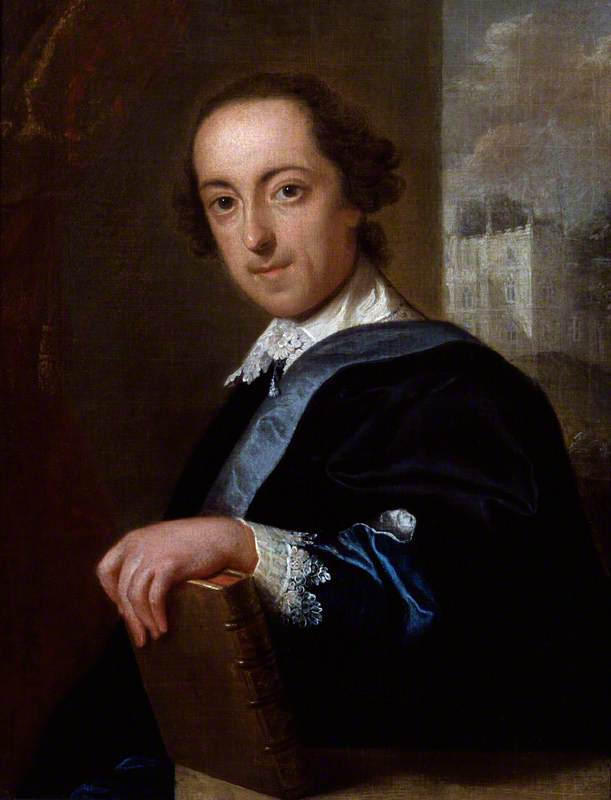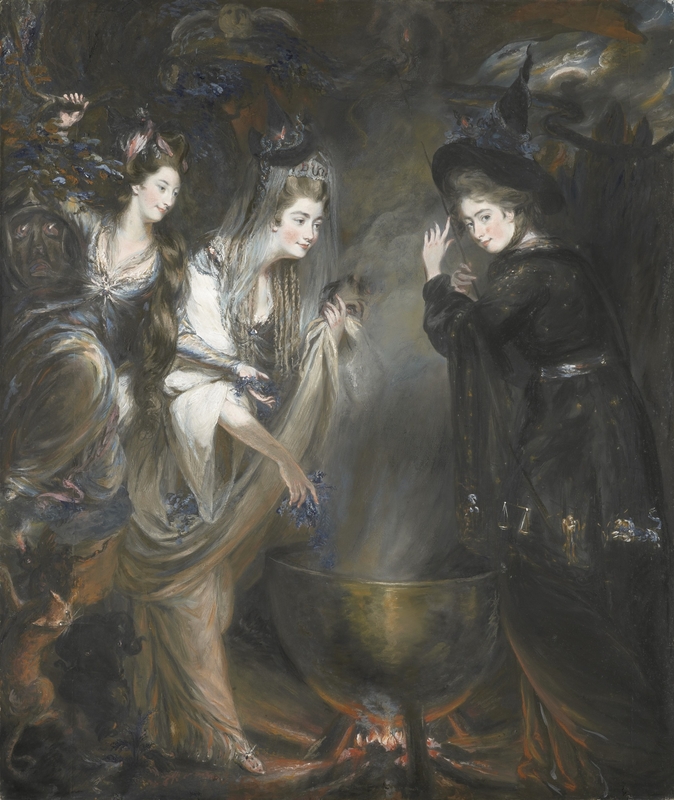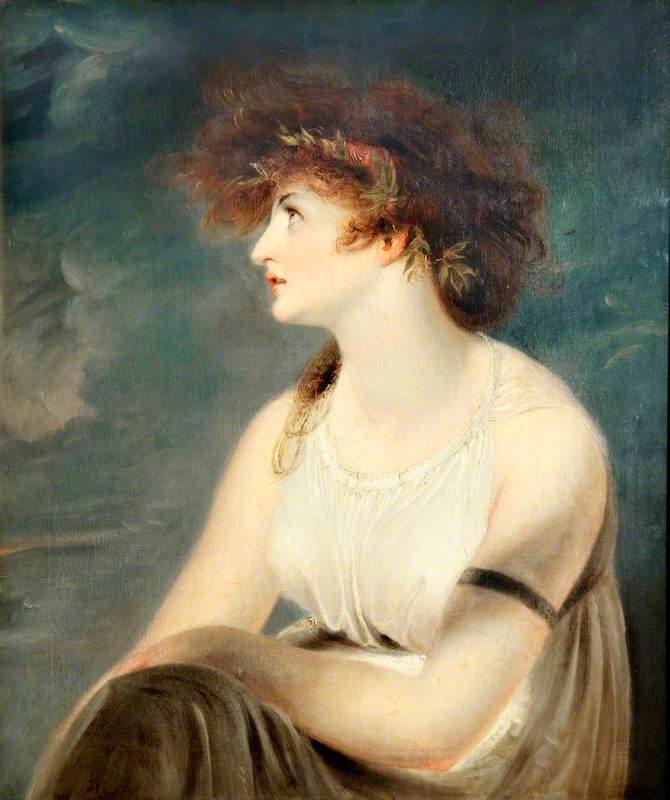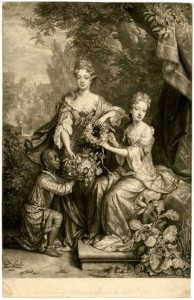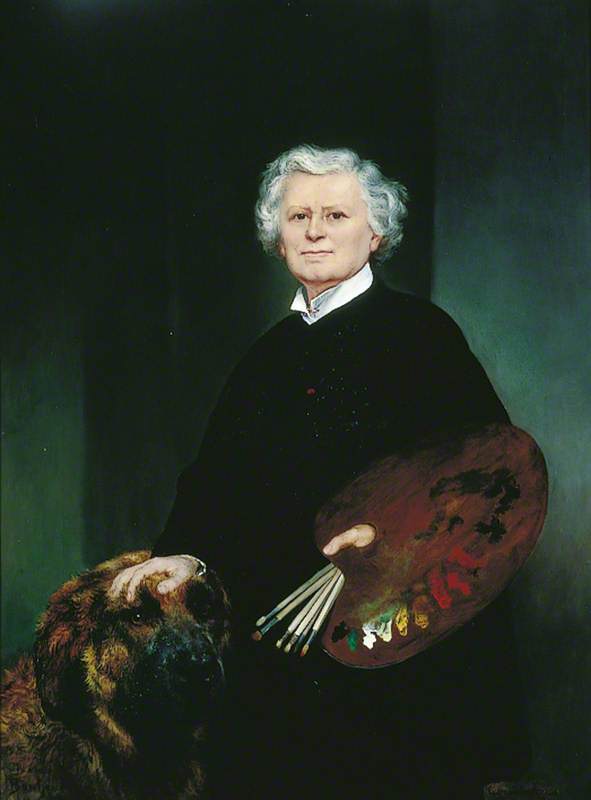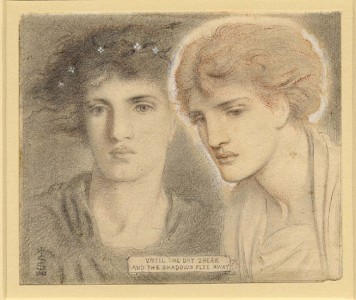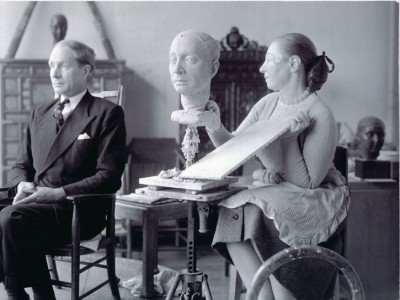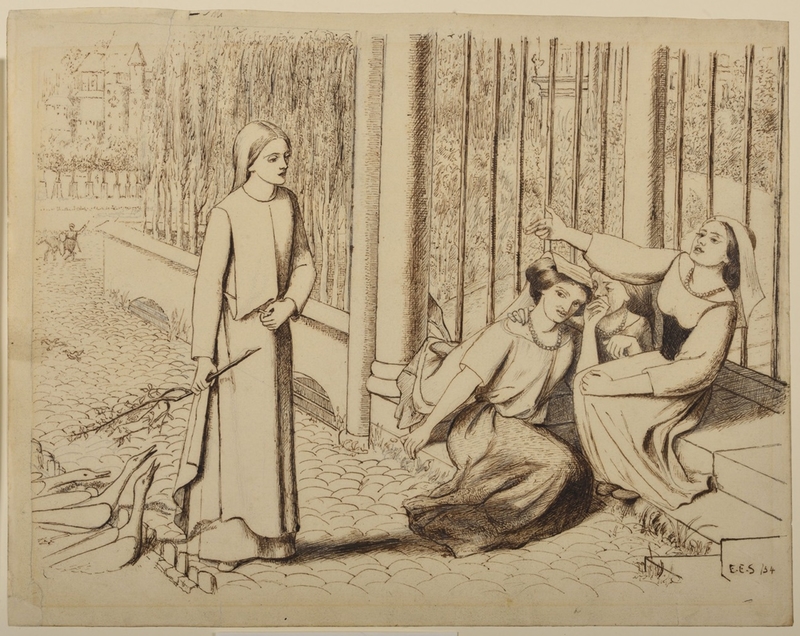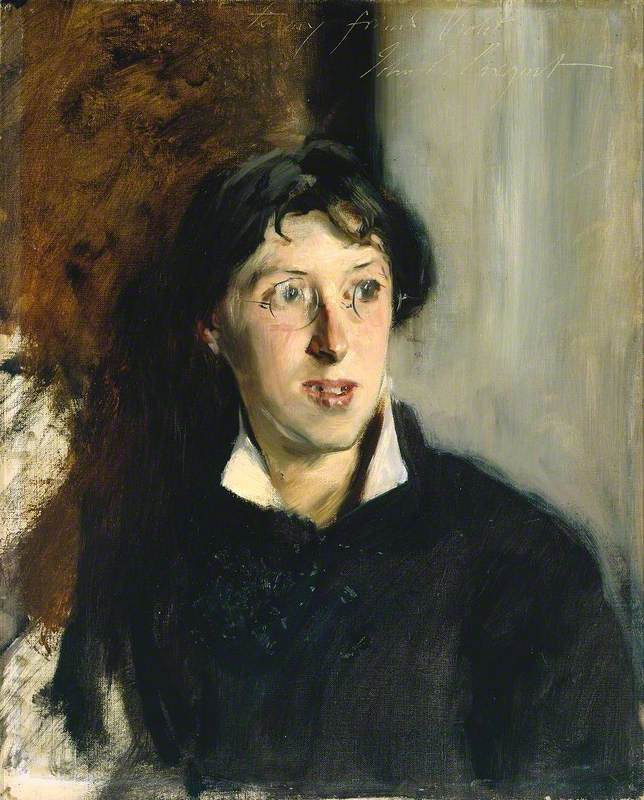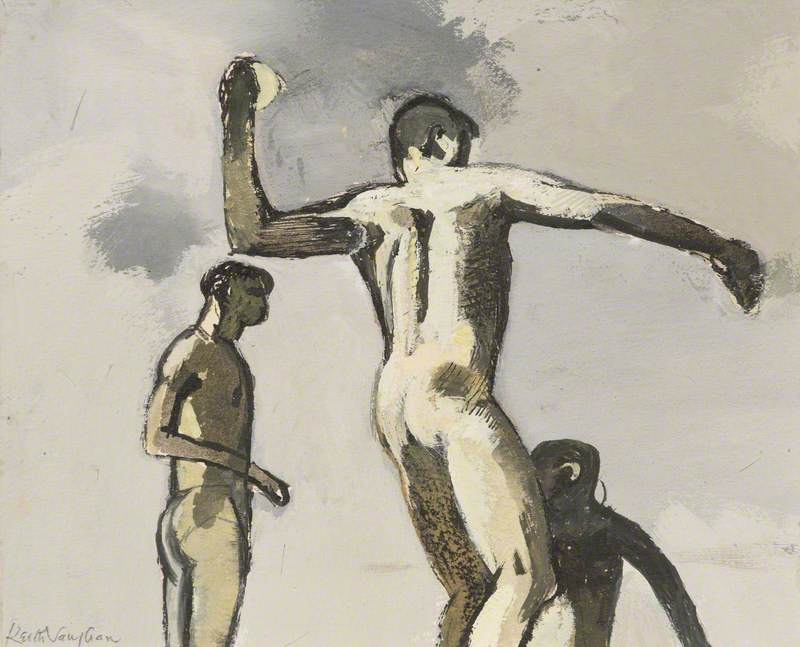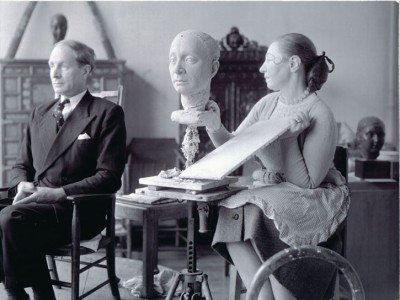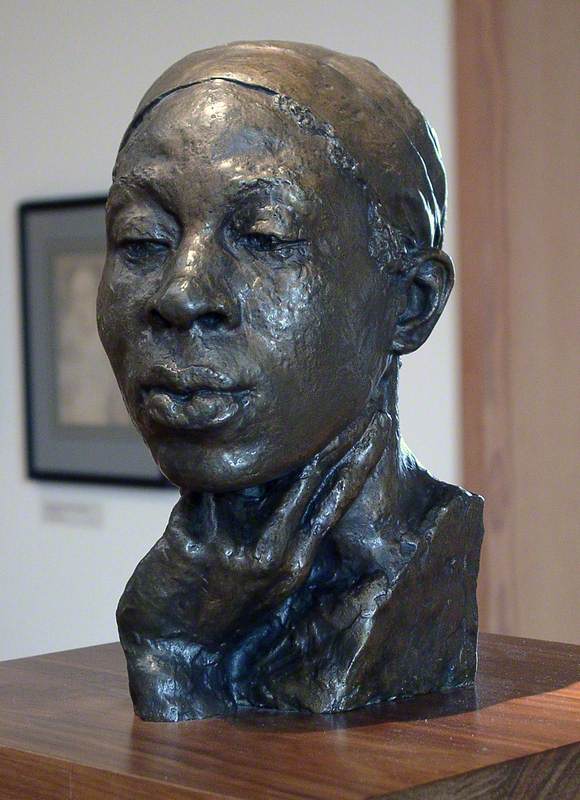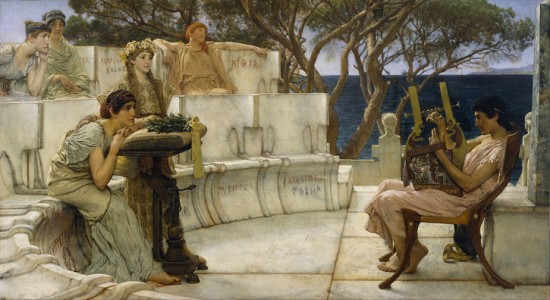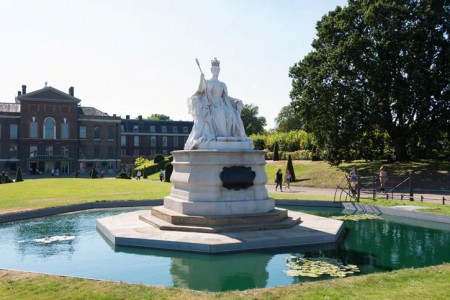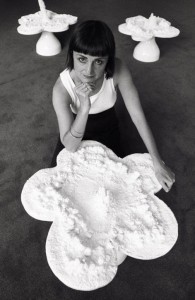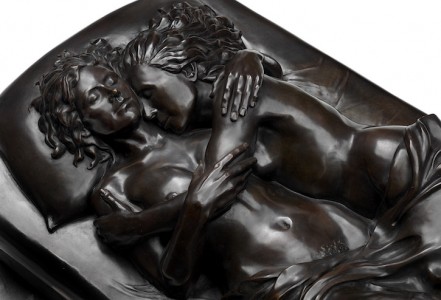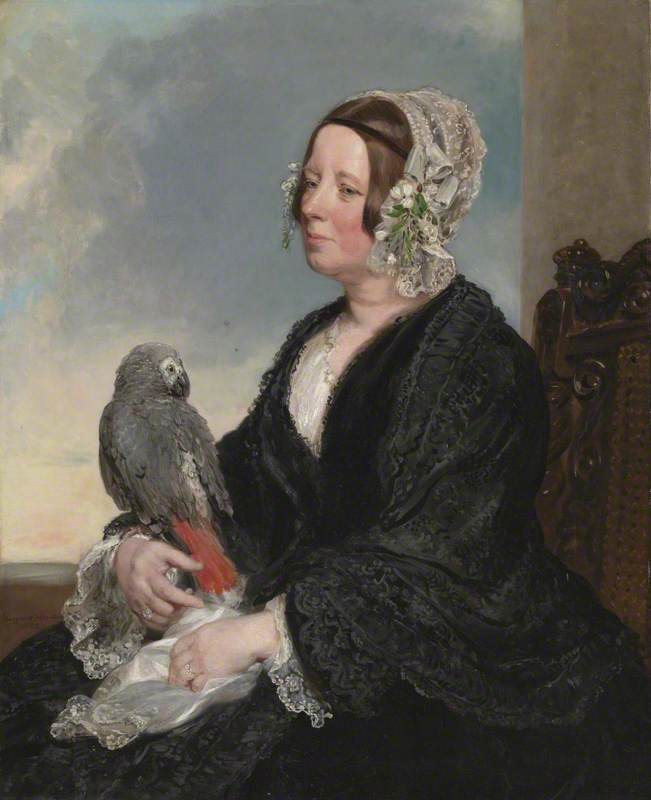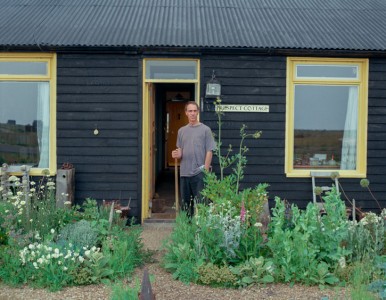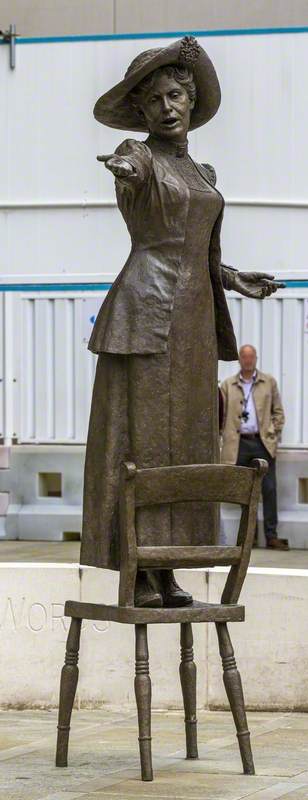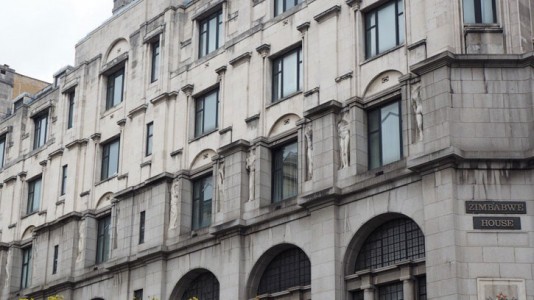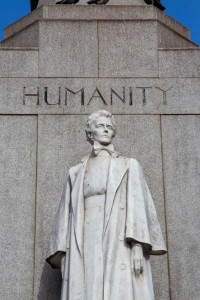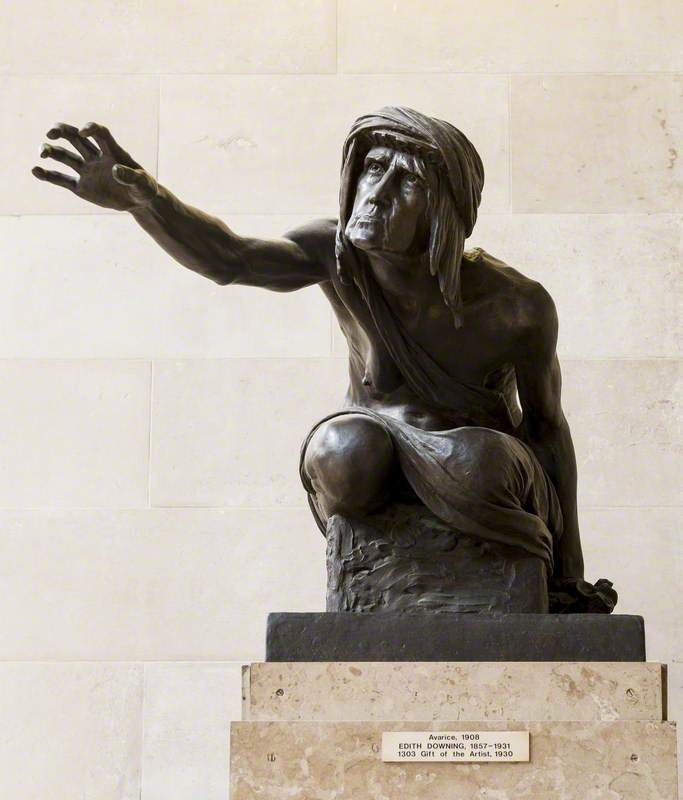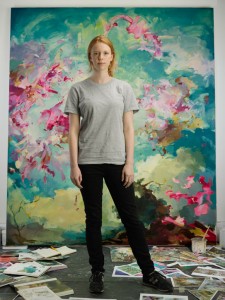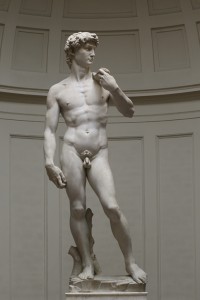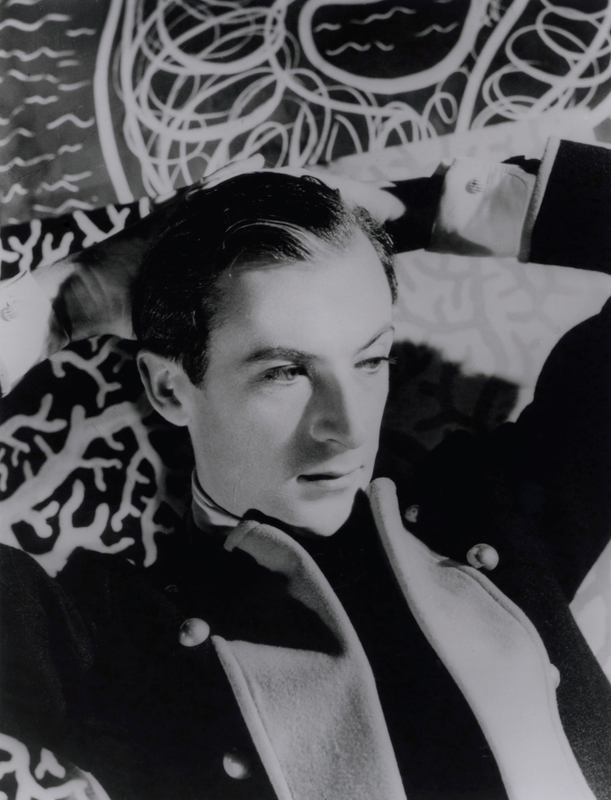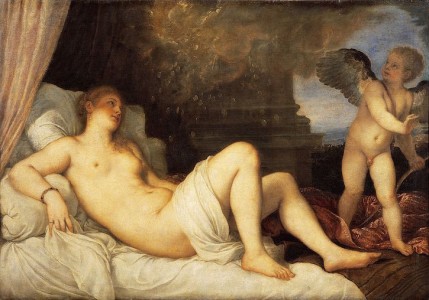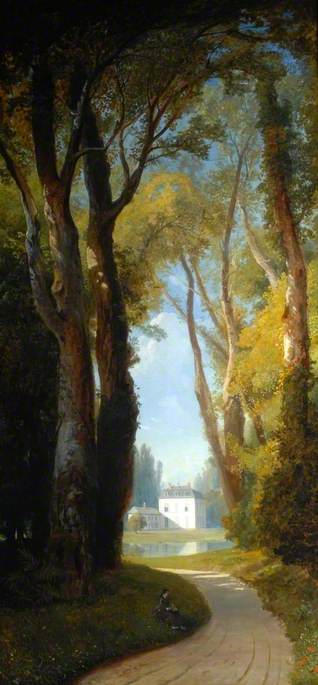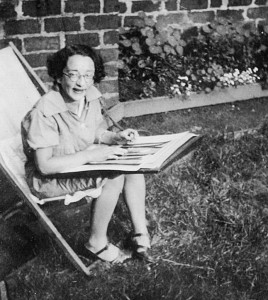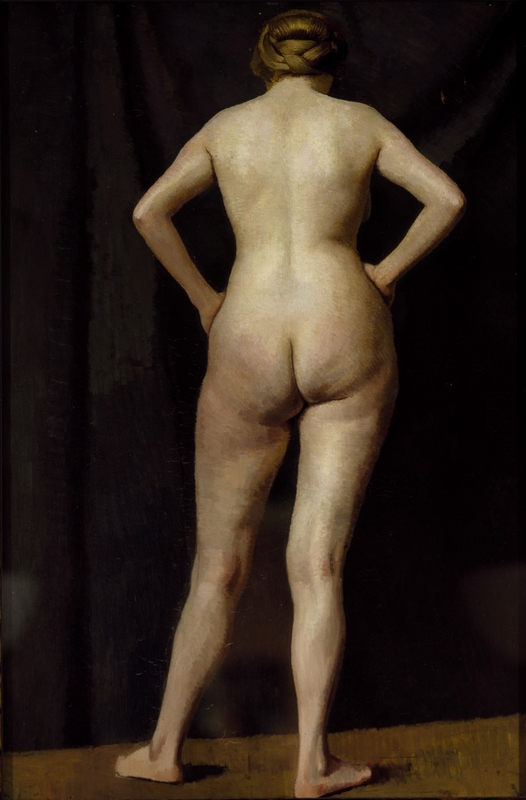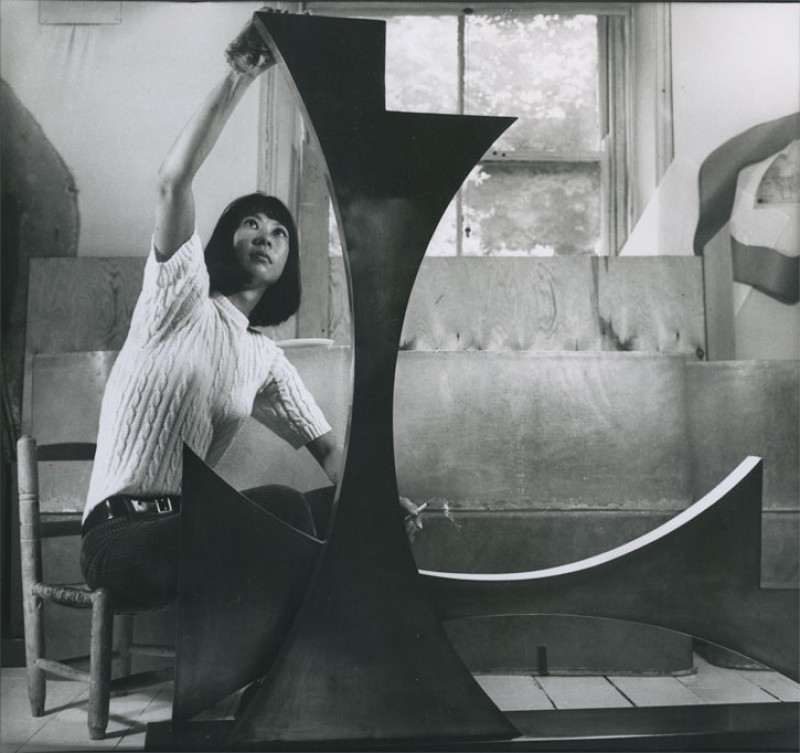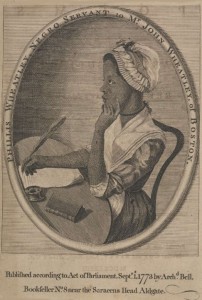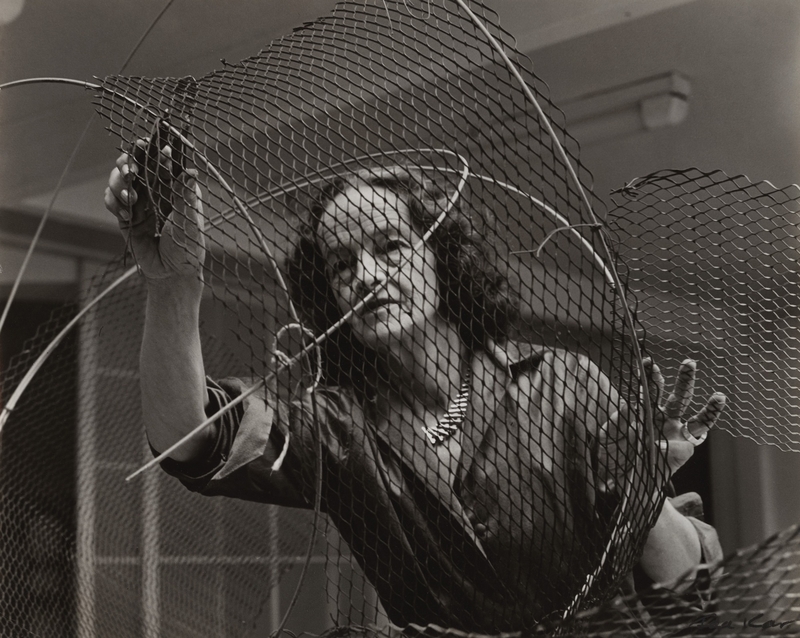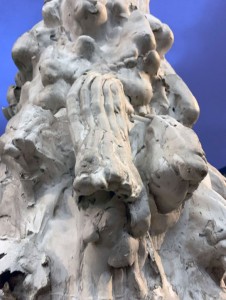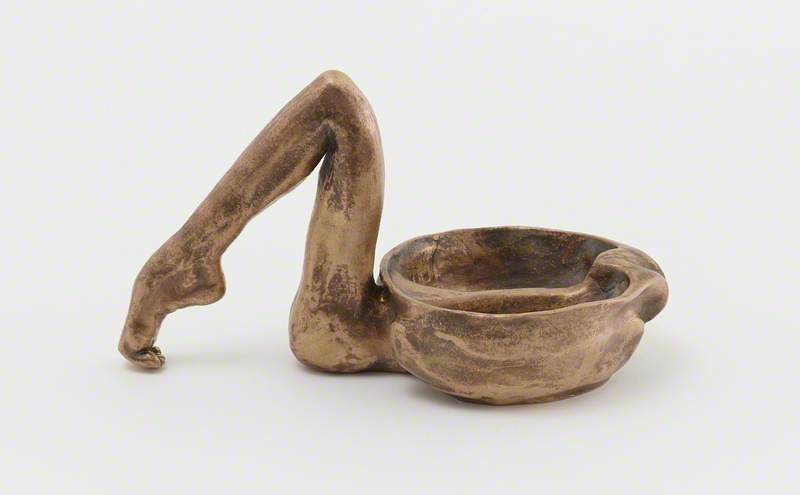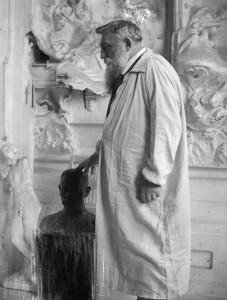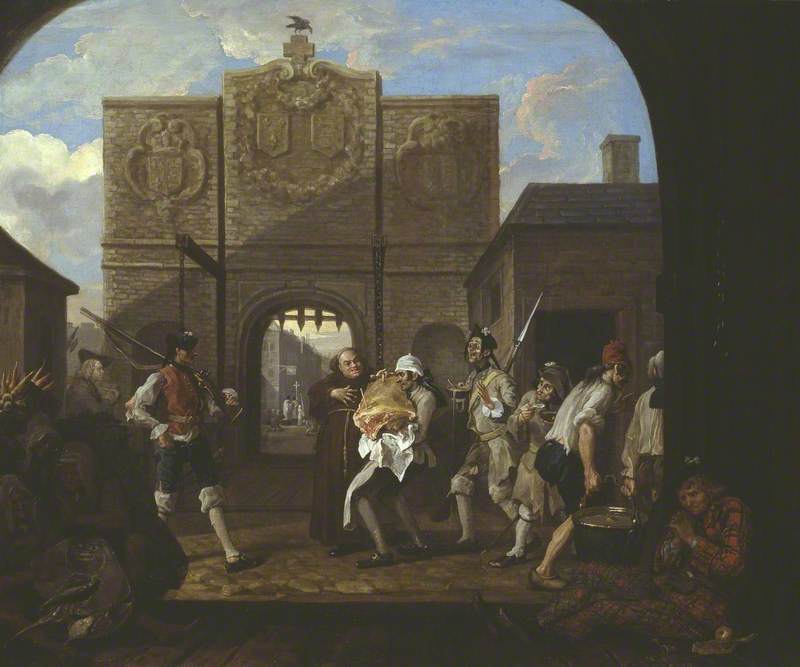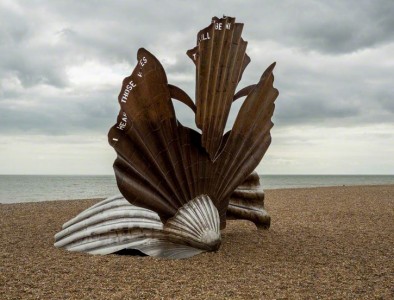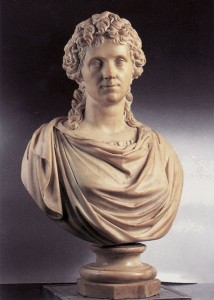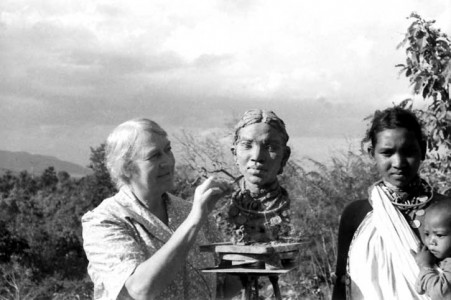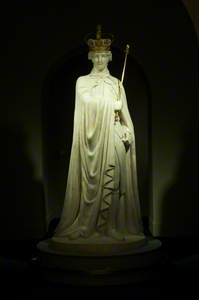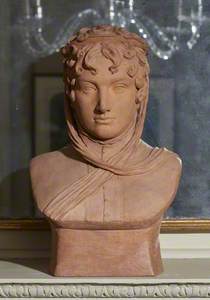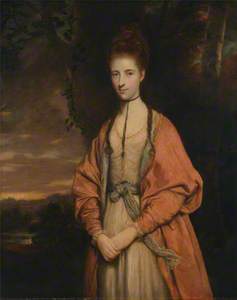In 1780, the writer Horace Walpole described a remarkable artist who 'has chosen a walk more difficult and far more uncommon than painting. The annals of statuary record few artists of the fair sex, and not one that I recollect of any celebrity... [but her] busts from the life are not inferior to the antique.'
The woman in question was Anne Seymour Damer (1748–1828), a neoclassical sculptor, actor and writer.
Anne Seymour Damer, née Conway
(copy after an original of 1772–1773)
Joshua Reynolds (1723–1792) (copy after) 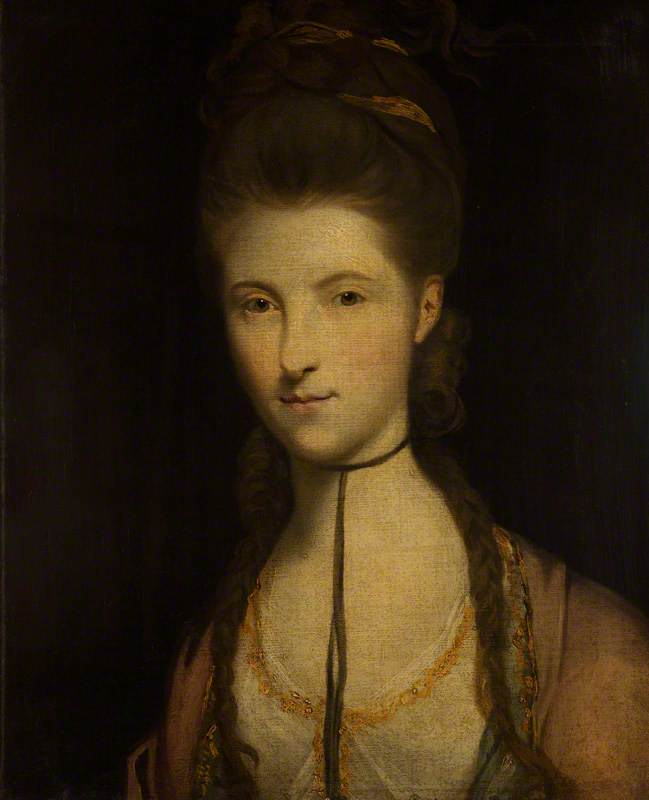
As Walpole noted, she stood out as an unusual woman for her time. A well-connected society artist, she exhibited 32 works at the Royal Academy between 1784 and 1818.
Meanwhile, some of her artistic subjects included Lord Nelson, Sir Joseph Banks, George III, Princess Caroline of Wales, and Lady Melbourne. She is even said to have given private sculpture lessons to Princess Caroline.
Caroline, Princess of Wales (1768–1821)
early 19th C
Anne Seymour Damer (1748–1828) 
Although there were women with artistic careers in the late eighteenth and early nineteenth centuries, it was almost unprecedented to find them working the medium of sculpture. The historical significance of Damer's achievements should therefore not be underestimated. What's more, Damer's life and work can be seen as important to art historical interpretations that focus on 'queering' the canon. As we'll discover, she was seen to subvert gender roles in more ways than one.
Self Portrait
marble (?) by Anne Seymour Damer (1748–1828). Uffizi Gallery, Florence 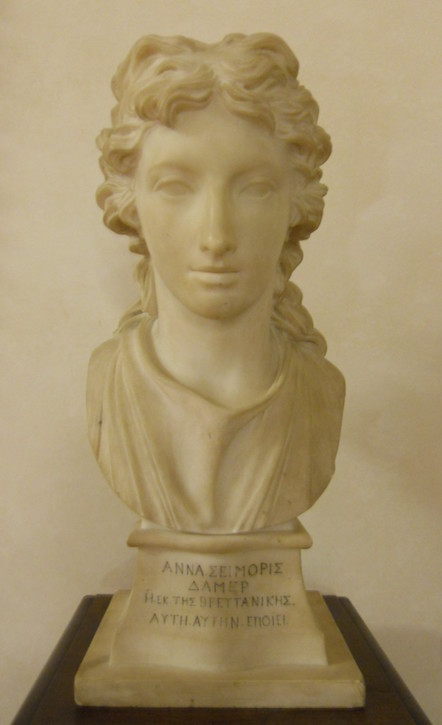
Born Anne Conway in 1748, Anne's aristocratic background put her at a great advantage, as is often the case with successful women of the past. Her maternal grandfather was the 4th Duke of Argyll and her paternal grandfather the Duke of Somerset. Her father, Field Marshall Henry Seymour Conway, became Assistant Secretary in Ireland in 1751.
As an aristocratic girl, it would have been perfectly correct for her to be tutored in the classics, music, languages, sewing and other domestic skills. More unusually, however, she received training in sculpture by the artists Giuseppe Ceracchi and John Bacon. Furthermore, Anne's education also came from the company she kept.
Anne Seymour Damer (1749–1828), as the Muse of Sculpture
(detail), 1778, marble by Giuseppe Ceracchi (1751–1801) 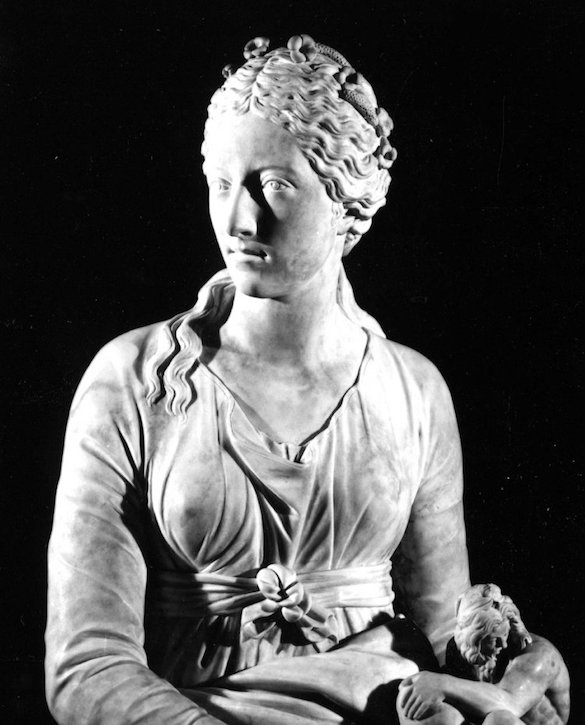
Anne spent much of her childhood with Horace Walpole, who was her cousin and godfather. Walpole was the Whig politician famous, author of the gothic novel The Castle of Otranto and the brains behind the neo-Gothic Strawberry Hill House in Twickenham (seen in the background of his 1754 portrait by John Giles Eccardt).
When Anne's parents made the move to Ireland, she came to stay in the House. With access to the enormous library, and the roster of society artists and thinkers Walpole loved to entertain, there was no shortage of intellectual stimulation. Walpole himself was Anne's greatest advocate, supporting her throughout her career and calling her a 'female genius'. Her artistic endeavours were also encouraged by the likes of Sir Joshua Reynolds, founding President of the Royal Academy (who later painted her portrait), and the philosopher David Hume.
Another key turning point in Anne's life was her marriage to John Damer, the eldest son of the Earl of Dorchester. It was not a love match. The pair separated in 1774 after seven years together, and in 1776 John died when Anne was just 27. She was left in debt from the gambling addiction that had brought on his death, but received funds guaranteed by the prenuptial agreement, which allowed her financial independence.
After a period of travelling through Europe, Anne Damer moved to a smaller house in Sackville Street where she gradually began to build her career. Though this period could be perceived as a humbling one, Walpole said he had never seen her better. Her life certainly seemed to be on an upward trajectory.
Meanwhile, she was also a player in major political and intellectual movements of her day, operating within a network of other women with influence. In Daniel Gardner's 1775 painting The Three Witches from Macbeth (now on display at the National Portrait Gallery), Damer is depicted alongside Georgiana, the Duchess of Devonshire; and Elizabeth Lamb, Viscountess Melbourne.
All three of these women were instrumental campaigners for the Whig Politician Sir Charles James Fox and are shown in character as the infamous Shakespearian trio, gathered around a cauldron as if in the midst of cooking up a plan.
Although witches often have unflattering connotations, the Macbeth composition was reportedly theatre-loving Damer's and Melbourne's own suggestion. However, Damer was cast in other stereotypical roles that were much more out of her control.
As mentioned, it was exceptional for a woman to be a sculptor, which demanded real physical toil as well as the study of the nude male form. It was very much regarded as a male profession.
Damer subsequently endured close scrutiny of her personal life by critics and newspaper satirists, who made jibes about her 'masculine' pursuits. Joseph Farrington noted that 'the singularities of Mrs Damer are remarkable — She wears a Mans Hat, and Shoes, — and a Jacket also like a mans — thus she walks about the fields with a hooking stick...'.
The word 'singular' has othering implications, marking Damer as an outsider. This othering led to the explicit speculation by some commentators on her sexuality.
Again and again, Damer was referred to as a 'Sapphist' – Sappho being the classical poet from the isle of Lesbos, where the word 'lesbian' derives from.
Unlike 'lesbian' (which was not used in the modern-day sense until later in the nineteenth century), 'Sapphist' was used commonly in this period, particularly when describing upper-class women. Novelist Emma Donoghue has theorised this was fueled by rumours of Marie Antoinette's relationships with women, which were seen as a sign of aristocratic depravity. But in Damer's case, some satirists even went so far as to say she epitomised Sapphism itself.
Rumours abounded about Damer's intense relationships with the women in her circles, like the popular Drury Lane actress Elizabeth Farren, of whom Damer made a portrait bust in 1778.
Elizabeth, née Farren (1759–1829), Countess of Derby
c.1788
Anne Seymour Damer (1748–1828) 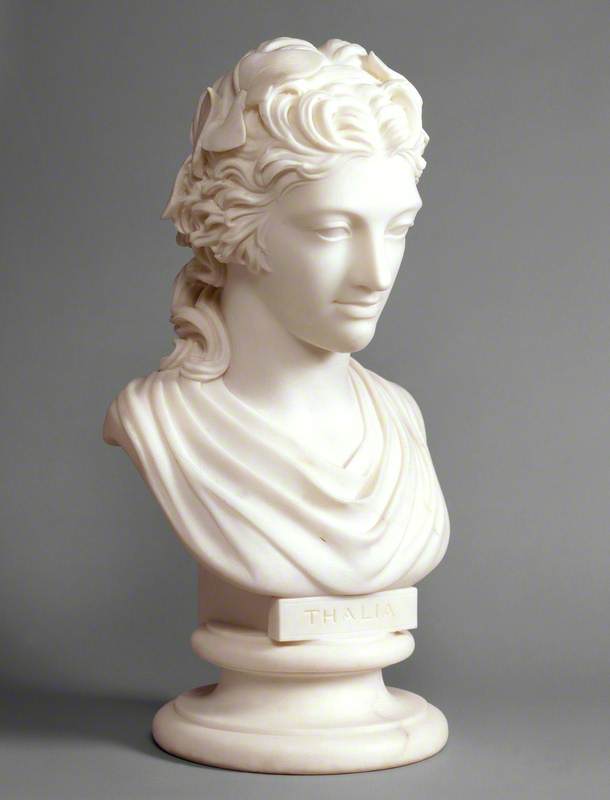
She was also repeatedly linked with the writer Mary Berry, whose portrait she also sculpted. Anne and Mary travelled around the Continent and England, and when Walpole bequeathed his Strawberry Hill estate to Mary, they moved into Little Strawberry Hill House together.
Although the gossip in the papers aimed to derail and mock Damer, more sincere accounts of these two women offer a compelling case for viewing their relationship through a queer lens. The diarist Joseph Farrington gives a touching insight into their dynamic with a 1798 entry describing how 'on Miss Berry going lately to Cheltenham, the servants described the separation between Her and Mrs Damer as if it had been parting before death.'
Anne played a chivalric role with Mary, and in letters calls her a 'superior being' and 'my only earthly comfort'. Berry's bust was the only sculpture of a woman that Damer conducted in bronze, an exceedingly expensive material. While Damer denied that she had any physical relationship with Berry or other women, she never did deny the strength of her feelings.
Mary Berry (1763–1852)
(based on a work from c.1793)
Anne Seymour Damer (1748–1828) 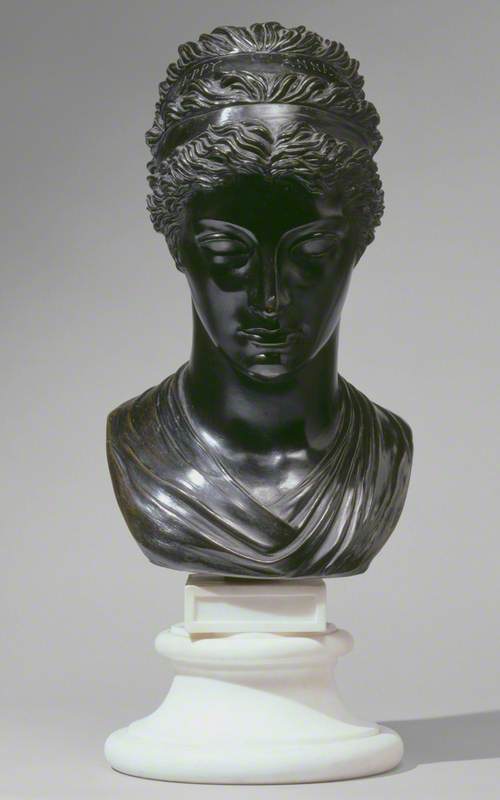
Berry was certainly her life partner in some sense. When Damer died in 1828, Berry refused to destroy all of her letters as instructed. She wrote, 'I cannot for my soul obliterate all memory of the truest, the most faithful, and most generous friendship that animated two human beings'.
The contrast between these tender words and the jeering ones printed in the press raise questions for queer historians that are all too familiar. By reading into the former, are we feeding the agenda of the latter? One the one hand, a feminist argument might be to reject the stereotype that a woman in a male-dominated industry must be a lesbian. On the other hand, to deny that Damer could have been romantically attracted to women risks playing into the erasure of queer people in history.
For the most part, it is incredibly difficult to 'prove' the sexuality of a historical figure when they are unlikely to have recorded it anywhere, particularly in times when doing so would have meant persecution. If 'Sapphist' was a derogatory label used to make a mockery of her, little wonder that Damer rejected it.
Is it, therefore, possible to approach Damer with a queer agenda, without playing into the homophobia that was levelled at her? I would argue yes. If 'queer' and even 'gay' are terms rooted in homophobia that have been politicised, reshaped and reclaimed over the years, there is also a case to be made in favour of the 'Sapphist' label. In the eighteenth and nineteenth centuries, the figure of Sappho was not only a shorthand for lesbian (in that many of her lyrical love poems are addressed to women) but was respected as one of history's great artists. She reoccurs in many mythological paintings as a noble allegory of creativity.
Damer, who admired Greek culture and sculpture, and studied the language, was herself very much a classicist. Her bust of Farren, for example, captures her in character as Thalia – the Greek muse of comedy and idyllic poetry, and whose name translates into 'the joyous' or 'the flourishing'. Her portrait of Berry conforms to similarly idealised classical forms. And as an artist whose intimate networks of women were a cultivated source of vitality and inspiration, is Sappho therefore not an apt comparison for Damer?
Ultimately, the label does not have to be reductive. It can be used as an alternative lens that, instead of shoehorning her into a heteronormative patriarchal canon, allows us to see how Damer (quite literally) carved her way as an important artist in her own right.
Olivia Bladen, Family Programmer at the Royal Academy of Arts, and freelance museum educator, writer, and art historian
